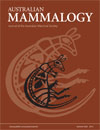
AUSTRALIAN MAMMALOGY
Scope & Guideline
Unveiling the Wonders of Australian Mammalian Fauna
Introduction
Aims and Scopes
- Conservation Biology and Management:
The journal emphasizes research that informs conservation strategies for threatened and endangered species, including studies on population dynamics, habitat use, and the effects of invasive species. - Ecological and Behavioral Studies:
Research focused on the ecological roles and behaviors of Australian mammals, examining aspects such as social structures, foraging strategies, and reproductive patterns. - Impact of Environmental Changes:
Studies investigating how climate change, habitat destruction, and other anthropogenic factors affect mammalian populations and ecosystems. - Methodological Innovations:
The journal promotes the development and application of new research methodologies, such as remote camera trapping, telemetry, and genetic monitoring, to enhance the study of mammals. - Community and Citizen Science:
Inclusion of research that engages local communities and citizen scientists in wildlife monitoring and conservation efforts.
Trending and Emerging
- Impact of Climate Change:
There is a growing emphasis on understanding how climate change affects mammalian species, particularly regarding their distributions, behaviors, and habitat use. - Reintroduction and Translocation Studies:
Research focused on the outcomes of reintroduction efforts for endangered species is increasingly prominent, highlighting the importance of practical conservation applications. - Community Engagement in Conservation:
Emerging studies highlight the role of community involvement in conservation efforts, using citizen science to gather data and raise awareness about local mammalian populations. - Technological Advancements in Monitoring:
The use of innovative technologies such as drones, automated cameras, and genetic tools for monitoring wildlife is on the rise, improving data collection and analysis. - Human-Wildlife Interactions:
Research exploring the impacts of human activities on wildlife, including roadkill and habitat fragmentation, is becoming more common as conservationists seek to mitigate negative effects.
Declining or Waning
- Historical Ecological Studies:
Research focused on historical baselines and ecological changes over time is becoming less frequent, possibly due to a shift towards immediate conservation concerns and applied research. - Non-native Species Impact Studies:
While still relevant, there has been a noticeable decrease in publications specifically dedicated to the impacts of non-native species on native mammals, suggesting a potential shift toward integrated approaches that consider broader ecological contexts. - Behavioral Studies of Common Species:
Research on the behavior of more common mammalian species appears to be declining, as the focus shifts to threatened species and those with unique ecological roles. - Morphological Studies:
Research centered on the morphology of mammals, while still important, is less frequently published, indicating a possible preference for studies with direct conservation implications.
Similar Journals

MARINE ORNITHOLOGY
Unveiling the Wonders of Seabirds and Their HabitatsMarine Ornithology, published by the Pacific Seabird Group, is a vital resource in the field of animal science, zoology, and oceanography. With an ISSN of 1018-3337 and E-ISSN of 2074-1235, this journal has been a cornerstone for researchers and enthusiasts since its inception, actively contributing to the understanding of marine bird species and their ecosystems. Although it is currently not an open-access journal, it provides critical insights and findings that inform both academic research and practical conservation efforts. With its category quartiles positioned in Q3 for both Animal Science and Zoology, and Oceanography, Marine Ornithology occupies a significant, albeit competitive niche among scholarly publications. Researchers can benefit from its comprehensive coverage of marine avian studies, which is crucial for addressing the challenges these species face in changing oceanic environments. As the journal continues to evolve, with coverage from 1990 to 2024, it maintains an essential role in enriching our knowledge of marine biodiversity.

CYBIUM
Connecting researchers to the pulse of aquatic life.CYBIUM is a reputable journal published by the Société Française d'Ichtyologie, dedicated to advancing research within the fields of Animal Science and Zoology as well as Ecology, Evolution, Behavior and Systematics. With a commitment to fostering scientific dialogue, CYBIUM has been a valuable resource for scholars since its inception in 1996, reporting on a wide array of ichthyological studies and aquatic biology. The journal is recognized in the 2023 Scopus rankings with a notable position in the Q3 quartile for Animal Science and Zoology and Q4 for Ecology, Evolution, Behavior and Systematics, reflecting its growing influence in these disciplines. Although currently not categorized as Open Access, CYBIUM continues to provide essential insights into fish biology and ecology from the heart of France, the Museum national d'Histoire naturelle in Paris. Researchers, professionals, and students in related fields will find CYBIUM an indispensable tool for staying informed about the latest developments and research trends within ichthyology and marine sciences.
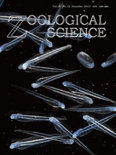
ZOOLOGICAL SCIENCE
Illuminating the Path of Evolutionary BiologyZoological Science, published by the Zoological Society of Japan, is a leading journal dedicated to the fields of animal science and zoology. With its ISSN 0289-0003, this respected publication has established itself as a prominent source of scientific research, attaining a commendable Q2 ranking in the 2023 category of Animal Science and Zoology. Spanning over three decades, from 1992 to 2024, the journal offers a valuable platform for scholarly articles that explore various aspects of zoology, including ecology, behavior, and evolutionary biology. Although it operates under a traditional subscription model, its contributions are supported by a robust community of researchers and professionals who value its insights. The journal strives to foster academic discourse and insights that drive understanding and conservation of wildlife, making it an essential resource for students and established experts alike. The publishing headquarters located in Tokyo, Japan, further enhances its international reach and influence in zoological studies.

SPIXIANA
Championing Rigorous Research in ZoologySPIXIANA is a distinguished journal dedicated to the fields of animal science and zoology, published by VERLAG DR FRIEDRICH PFEIL in Germany. With the ISSN 0341-8391, it has been contributing to the scientific community since its inception, with volumes converging from 2008 to 2024. Although currently listed in the Q4 quartile of the 2023 category rankings for Animal Science and Zoology, it provides a vital platform for researchers and professionals to disseminate significant findings in the field. Despite being unindexed in open access, SPIXIANA ensures that vital research reaches its audience, enhancing academic discourse and furthering our understanding of zoological sciences. Its commitment to sharing rigorous scientific research make it an important resource for anyone passionate about animal biology and conservation.

PACIFIC CONSERVATION BIOLOGY
Fostering innovative strategies for a sustainable future in conservation.PACIFIC CONSERVATION BIOLOGY is an esteemed academic journal published by CSIRO PUBLISHING, dedicated to advancing research in the fields of ecology and nature conservation. With a strong focus on the unique challenges and biodiversity of the Pacific region, this journal serves as a crucial platform for researchers, conservationists, and students alike to disseminate high-quality, impactful findings. Operating from Australia, it has become a significant resource since its inception in 1993, navigating through nearly three decades of vital scholarly communication. Ranked in the Q2 category for both Ecology and Nature and Landscape Conservation as of 2023, PACIFIC CONSERVATION BIOLOGY maintains rigorous standards, as reflected in its successful Scopus rankings. The journal plays a pivotal role in addressing pressing ecological issues and fostering innovative conservation strategies, making it an essential reference for anyone involved in environmental science. Access options for the journal facilitate widespread distribution of knowledge, supporting the mission to promote informed decision-making in conservation practices.
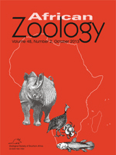
AFRICAN ZOOLOGY
Unveiling the Wonders of African WildlifeAFRICAN ZOOLOGY, published by Taylor & Francis Ltd, stands as a significant journal in the realm of Animal Science and Zoology, with a proud history dating back to 1996 and slated to continue until 2024. With an ISSN of 1562-7020 and E-ISSN 2224-073X, this journal provides a reputable platform for researchers and practitioners dedicated to the study of animal biology across the African continent. It has been recognized for its quality scholarship, evidenced by its Q3 categorization in the 2023 Scopus quartile rankings and an impressive rank of #182 out of 490 within its field. As an open-access journal, it facilitates the dissemination of vital research findings and promotes broader accessibility, catering to a diverse audience of professionals, scholars, and students alike. The journal aims to enhance our understanding of wildlife, conservation, and ecosystem dynamics in Africa, fostering collaborations that address critical ecological challenges. For researchers and enthusiasts keen on contributing to and staying informed about advancements in zoological science, AFRICAN ZOOLOGY is an essential resource that enriches the global discourse on biodiversity and conservation efforts.
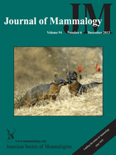
JOURNAL OF MAMMALOGY
Connecting Scholars for a Sustainable Future in MammalogyJournal of Mammalogy, published by Oxford University Press Inc, is a premier journal dedicated to the field of mammalogy, providing a key platform for researchers and professionals interested in the biology, ecology, and conservation of mammals. With a prestigious impact factor reflected in its Q1 ranking in Animal Science and Zoology, and multiple Q2 rankings in related categories such as Ecology and Genetics for 2023, this journal is recognized for its significant contribution to advancing knowledge in the discipline. The journal features rigorous peer-reviewed articles, ensuring high-quality research output valuable for students, academia, and conservation efforts alike. While not an open-access journal, it offers comprehensive subscription options for institutions and individual readers, promoting accessibility to critical findings in the realm of mammal research. Established in the earlier years of the 20th century, the Journal of Mammalogy has continuously evolved, serving as an integral resource for disseminating innovative studies and insights that drive the future of mammalian sciences.

JOURNAL OF ZOOLOGY
Exploring the wonders of zoological sciences since 1830.JOURNAL OF ZOOLOGY, published by Wiley, stands as a premier scholarly journal in the fields of Animal Science and Zoology, renowned for its outstanding contributions to the knowledge of animal biology and ecology. With an impressive impact factor and a strong ranking in the Q1 category for Animal Science and Zoology, as well as Q2 for Ecology, Evolution, Behavior, and Systematics, the journal rigorously engages with both foundational research and groundbreaking discoveries since its inception in 1830. Located in Hoboken, New Jersey, this journal is dedicated to fostering the academic community's understanding of zoological sciences, providing access to important research that shapes wildlife conservation efforts and ecological studies. Although the journal does not currently offer open access options, it continues to attract significant attention, as evidenced by its strong Scopus rankings in related categories. Researchers, professionals, and students will find invaluable resources in the JOURNAL OF ZOOLOGY to advance their understanding of animal life and the ecological challenges it faces today.
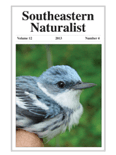
SOUTHEASTERN NATURALIST
Championing Ecological Integrity in the SoutheastSOUTHEASTERN NATURALIST, published by the esteemed Eagle Hill Institute, serves as a vital resource in the fields of ecology, evolution, behavior, and systematics. With an ISSN of 1528-7092 and an E-ISSN of 1938-5412, this journal has been contributing to scientific discourse since 2002 and continues to provide insight into the intricate dynamics of southeastern ecosystems. While it currently holds a Q4 ranking in its category, the journal is committed to fostering research that advances understanding in its specific regional context, making it a unique platform for scientists interested in biological diversity and conservation issues relevant to the southeastern United States. Although it does not offer open access, researchers and institutions can subscribe to gain full access to cutting-edge research articles and reviews that highlight both multidisciplinary approaches and community-based studies. By bridging local ecological knowledge with broader evolutionary theories, SOUTHEASTERN NATURALIST appeals to a diverse audience, including researchers, conservationists, and students dedicated to ecological integrity and sustainable practices.

AMPHIBIAN & REPTILE CONSERVATION
Exploring Solutions for Amphibian and Reptile SurvivalAMPHIBIAN & REPTILE CONSERVATION, published by the Amphibian Conservation Research Center & Lab, is a leading journal dedicated to the field of herpetology and environmental conservation. With an ISSN of 1083-446X and an E-ISSN of 1525-9153, this journal serves as a vital resource for researchers, conservationists, and students interested in the preservation of amphibian and reptile species. The journal has achieved remarkable rankings, categorized in the Q2 quartile for Animal Science and Zoology, Ecology, and Nature and Landscape Conservation as of 2023, reflecting its significant contribution to the scientific community. Over the converged years from 2016 to 2024, the journal has established itself as an integral platform for disseminating research findings, fostering collaboration, and enhancing the understanding of biodiversity and ecosystem dynamics. By embracing an open-access approach, AMPHIBIAN & REPTILE CONSERVATION ensures that critical research is readily available to a global audience, promoting informed conservation efforts and policy advocacy to safeguard these vital species amidst their declining populations.